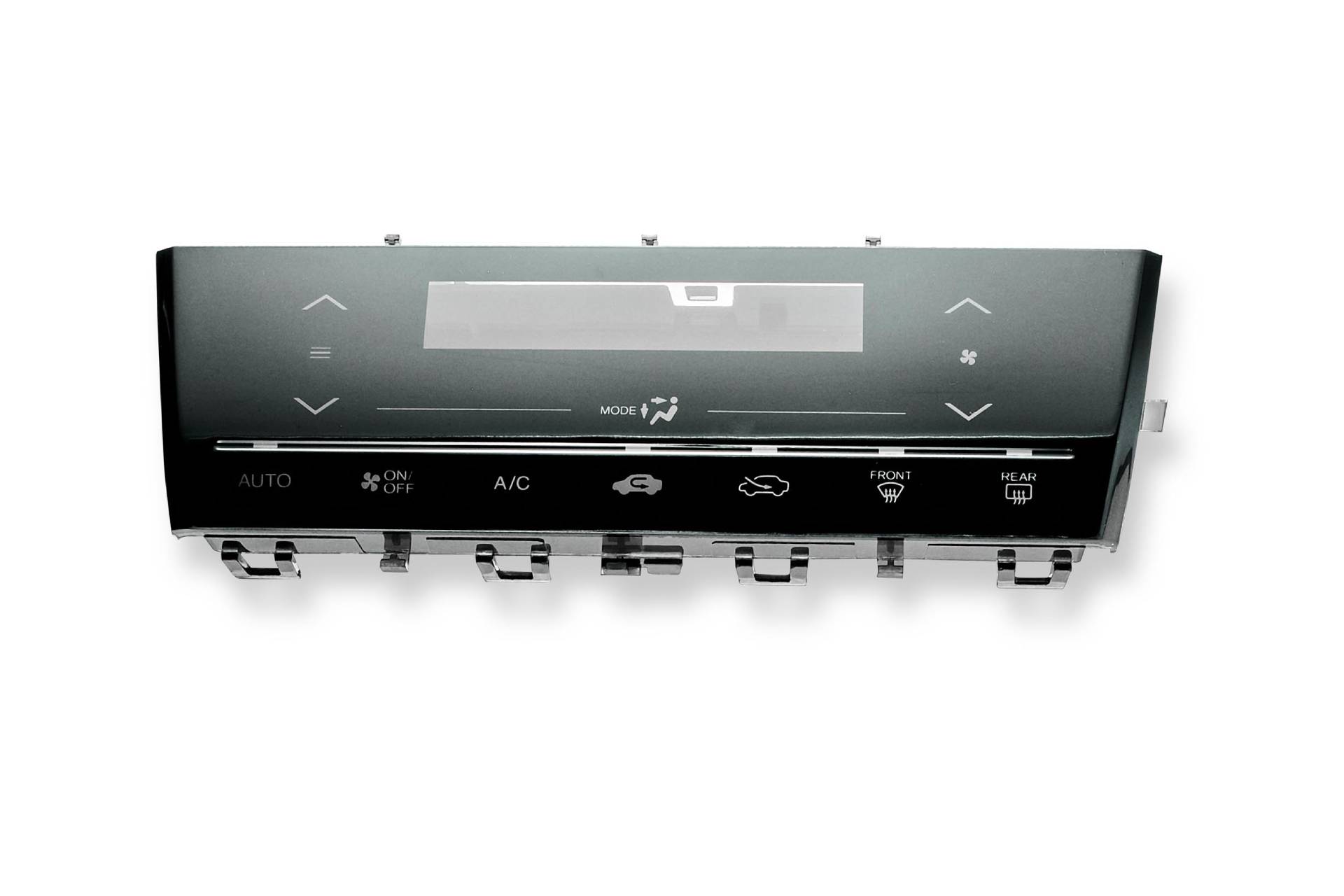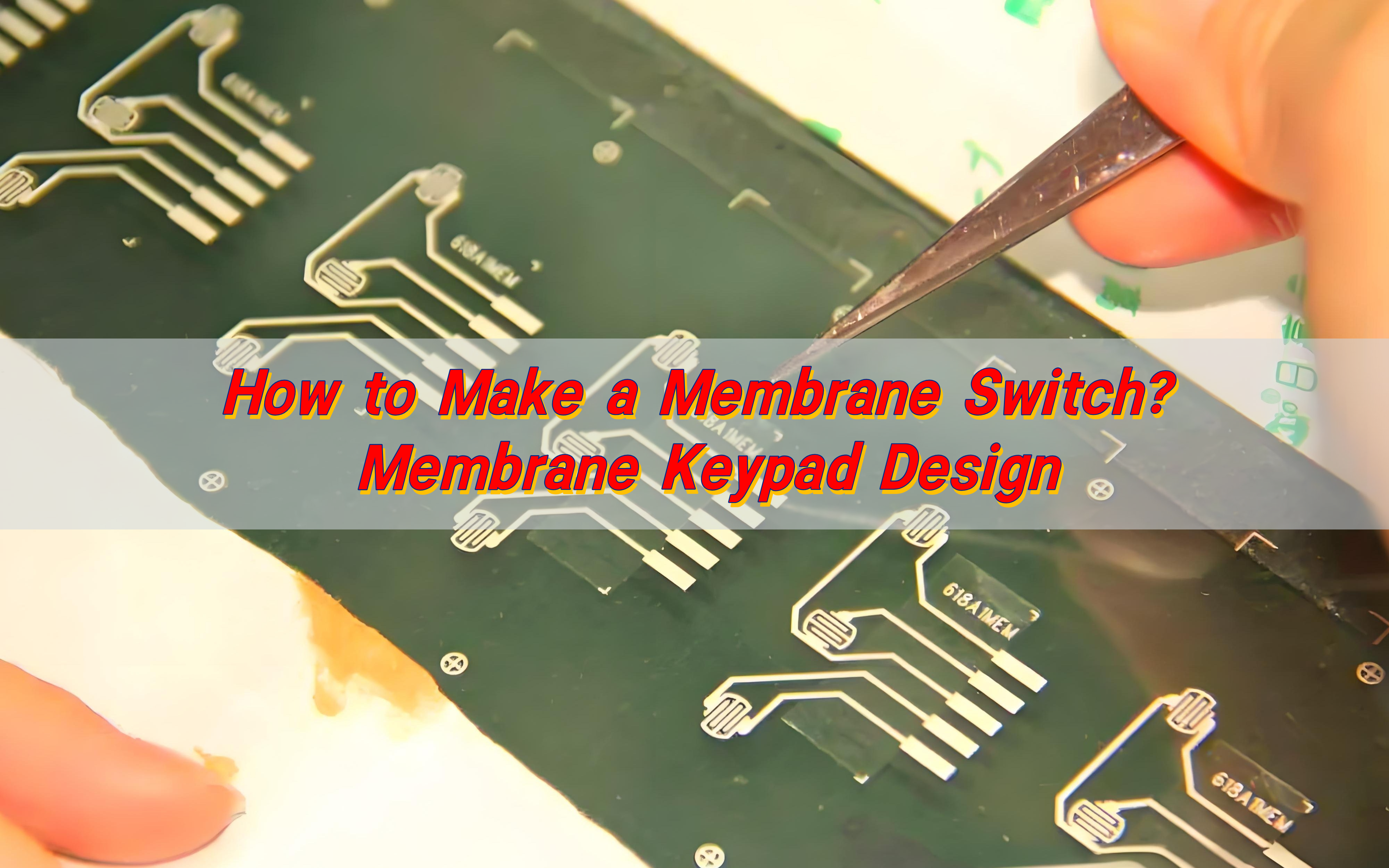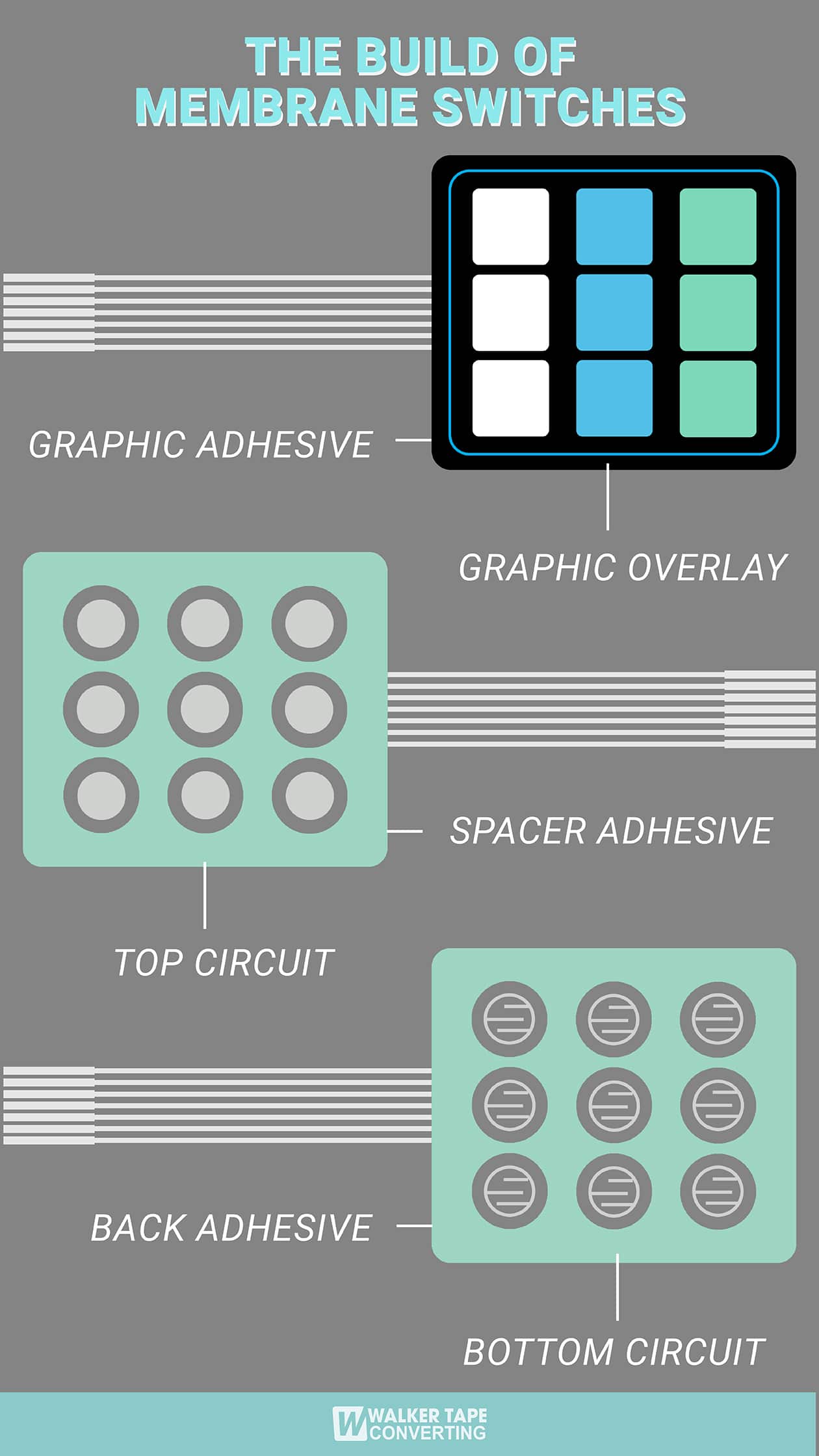Custom Designs by a Expert Membrane Switch Manufacturer
Exactly How Membrane Switch Innovation Functions and Its Role in Interface Design
Membrane switch innovation is a sophisticated approach that combines split materials for touch-sensitive input. Its design contains visuals overlays, conductive layers, and sticky elements that engage when pressed. This interaction not only finishes an electric circuit yet additionally influences the general individual experience. Recognizing the details of this modern technology discloses its considerable effect on interface layout, prompting concerns regarding its applications and future growths in different industries.
Recognizing Membrane Switch Modern Technology
Membrane switch technology works as an essential component in modern interface design. This modern technology combines graphic overlays, touch-sensitive membrane layers, and circuit layers to produce a portable, reputable input technique for different tools. The layout usually includes multiple layers, consisting of a published graphic layer that enables customers to connect with the device through tactile responses. Membrane switches are known for their resilience, resistance to moisture, and ease of cleaning, making them appropriate for atmospheres where standard mechanical buttons might fall short. Their inconspicuous design enables seamless assimilation into devices, contributing to a streamlined appearance. Furthermore, Membrane buttons can be tailored with numerous shades, textures, and symbols, boosting individual experience and aesthetic charm. This versatility makes them preferred in customer electronic devices, clinical devices, and industrial controls, where intuitive interaction is necessary. On the whole, Membrane button modern technology represents a substantial advancement in exactly how individuals engage with electronic interfaces.
Trick Elements of Membrane Changes
Membrane switches over include several crucial components that add to their functionality and style. The conductive layer materials, glue and assistance layers, and graphic overlay layout each play an essential function in making sure perfect performance and user interaction. Comprehending these elements is important for effective customer interface style.
Conductive Layer Materials
Conductive layer products play a necessary duty in the functionality and dependability of Membrane switches. When pressure is applied to the button, these materials are liable for finishing electric circuits. Generally, a combination of conductive inks, such as silver or carbon, is utilized to develop these layers. Silver conductive ink is favored for its premium conductivity and sturdiness, while carbon ink is often made use of for economical applications. The option of product influences not just the electrical performance however likewise the overall life expectancy of the button. In addition, the density and composition of conductive layers can affect tactile responses and button actuation. Choosing the proper conductive material is important for guaranteeing suitable performance in diverse interface applications.
Adhesive and Support Layers
Glue and support layers are vital components that add to the architectural integrity and performance of Membrane buttons. These layers give a robust structure, making certain that the various components of the Membrane switch continue to be safely bonded and appropriately aligned throughout their functional life. The glue layer assists in the accessory of the switch to the underlying surface area, supplying durability versus ecological factors such as moisture, temperature level variations, and mechanical stress. At the same time, assistance layers boost the switch's rigidness, stopping deformation during use and adding to a regular responsive reaction. With each other, these elements play a crucial duty in keeping the efficiency and durability of Membrane buttons, eventually influencing the overall individual experience in interface style.
Graphic Overlay Design
Although commonly neglected, graphic overlay design plays an essential role in the functionality and aesthetics of Membrane switches. This design primarily works as the user interface between the customer and the electronic devices, providing both aesthetic charm and operational clearness. Effective visuals overlays use shade, typography, and symbols to direct customers in comprehending and steering controls tool features. The choice of materials influences durability and responsive responses, making sure the overlay stands up to wear while preserving an enjoyable user experience. In addition, exact positioning of the overlay with the underlying components is vital for ideal efficiency. Finally, thoughtful graphic overlay layout boosts functionality, adds to brand name identity, and inevitably affects user satisfaction in tools using Membrane switch technology.
The Production Process of Membrane Switches
The production process of Membrane switches entails several critical actions that assure performance and durability. A visuals overlay is developed, including individual interface components and branding. This overlay is printed onto an adaptable substrate, typically polyester or polycarbonate, utilizing precision printing strategies to determine quality and color accuracy.Next, sticky layers are used, followed by the combination of conductive traces, often made from silver or carbon, which are vital for electric connectivity. These traces are screen-printed or etched onto a different layer. Hereafter, a spacer layer is added to create the needed void in between the overlay and the circuit layer, permitting for tactile feedback when activated.Finally, the elements are set up and examined for quality assurance, guaranteeing that each Membrane switch fulfills the called for specifications for performance and reliability. This precise procedure causes a durable item matched view website for numerous applications in user interface design.
Advantages of Using Membrane Switches

Membrane switches offer countless benefits that make them a favored option in interface design. One substantial advantage is their light-weight and portable nature, permitting streamlined layouts in numerous applications. Furthermore, Membrane buttons supply a sealed user interface, shielding against dust, dampness, and pollutants, which enhances durability and reliability. They are additionally extremely customizable, making it possible for designers to create special graphics and layouts tailored to specific user needs.Another advantage is their cost-effectiveness, as they generally call for much less product and labor contrasted to traditional buttons. The responsive feedback of Membrane switches can be crafted to enhance individual experience, providing a satisfying action without the bulk of mechanical elements. Furthermore, Membrane buttons can be quickly incorporated into varied environments, such as clinical devices, industrial tools, and consumer electronics. Generally, these benefits underscore the growing appeal of Membrane buttons in modern individual interface style.
Applications in Numerous Industries
Widely used throughout numerous sectors, Membrane switch technology has discovered its area in applications varying from clinical devices to consumer electronics. In the health care market, these buttons are indispensable to devices such as diagnostic equipment and client monitoring systems, providing sturdy, easy-to-clean user interfaces that hold up against sanitation procedures. The automotive industry employs Membrane switches in control panels and control panels, providing reputable procedure in difficult environments.Consumer electronic devices, including home appliances and gaming consoles, benefit from the sleek design and customizability of Membrane buttons, improving individual interaction. Additionally, industrial equipment makes use of these buttons for control panels, guaranteeing resistance to dust and moisture while keeping functionality.Moreover, the aerospace and army markets use Membrane buttons for tough applications, where dependability and performance are critical. Overall, Membrane switch technology offers diverse industries by incorporating capability, toughness, and aesthetic appeal, making it a versatile choice for modern-day interface.

Creating Interface With Membrane Switches Over
When developing user interfaces with Membrane switches, mindful factor to consider of both functionality and visual appeal is important. Membrane switches supply a smooth, low-profile style that can enhance aesthetic appeal while keeping usability. my sources Developers need to concentrate on button layout, guaranteeing instinctive positioning for ease of operation. The responsive comments provided by the Membrane switch is vital; it can impact user contentment and overall experience.Additionally, shade and visuals aspects need to straighten with the brand identification, reinforcing recognition and knowledge. Choosing long lasting products that endure damage is also essential, as long life contributes to usability gradually. Incorporating backlighting can improve exposure in numerous lights conditions, even more improving customer communication. Ultimately, a well-designed Membrane button user interface equilibriums both form and function, making sure that the individual experience is both appealing and effective, fulfilling the needs of varied applications throughout sectors.
Future Trends in Membrane Switch Technology
As Membrane button technology evolves, the integration of smart performances is ending up being progressively famous. These improvements make it possible for boosted interactivity and connection within interface (membrane switch manufacturer). Furthermore, the change towards environment-friendly products shows a growing dedication to sustainability in layout techniques
Smart Membrane Switches Over

Eco-Friendly Products Usage
Among the developments in Membrane button innovation, a substantial trend is arising in the direction of using green materials. Makers are increasingly prioritizing sustainability by integrating non-toxic inks and eco-friendly plastics, decreasing environmental effect. This shift not only aligns with global ecological requirements however also addresses consumer demand for greener items. Technologies in material scientific research have allowed the advancement of sturdy, environmentally friendly options that preserve efficiency without endangering top view it quality. These products offer comparable functionality to standard choices while lessening waste and poisoning. As sectors come to be extra eco-conscious, the assimilation of lasting techniques in Membrane button manufacturing is anticipated to increase, strengthening a commitment to environmental responsibility and paving the way for even more lasting interface options in the future.
Often Asked Questions
Just How Do Membrane Switches Over Differ From Conventional Mechanical Buttons?
Membrane switches over differ from typical mechanical switches primarily in building and operation. They use flexible layers that produce a secured interface, whereas mechanical buttons rely on physical motion and contact, leading to distinctive toughness and responsive comments features.
Can Membrane Changes Be Custom-made for Specific Applications?
Membrane buttons can indeed be personalized for details applications - membrane switch manufacturer. Suppliers develop them to fulfill unique demands, enabling customized layouts, graphics, and performances that improve customer communication and fit particular operational requirements properly
What Is the Lifespan of a Membrane Switch?
The life expectancy of a membrane button generally ranges from 1 to 5 million actuations, depending upon aspects such as worldly top quality, ecological problems, and use regularity. Regular testing can aid identify its long life and dependability in applications.
Are Membrane Switches Resistant or waterproof to Chemicals?
Membrane switches can be designed to be immune and water-proof to chemicals, relying on the products utilized and producing processes. Appropriate sealing and protective coverings enhance their resilience in various environmental problems and applications.
Just How Do Membrane Switches Impact Tool Power Intake?
Membrane switches can significantly impact tool power consumption by ensuring reliable procedure. Their low power requirements throughout activation assistance minimize power usage, contributing to longer battery life and total enhanced efficiency in digital gadgets. Membrane buttons are understood for their resilience, resistance to dampness, and simplicity of cleaning, making them ideal for atmospheres where traditional mechanical buttons may fall short. The automobile industry utilizes Membrane switches in control panels and control panels, supplying dependable procedure in challenging environments.Consumer electronic devices, including home devices and video gaming consoles, advantage from the sleek layout and customizability of Membrane switches, boosting individual communication. Additionally, commercial machinery utilizes these buttons for control panels, guaranteeing resistance to dust and dampness while maintaining functionality.Moreover, the aerospace and army industries use Membrane switches for tough applications, where integrity and performance are crucial. The development of Membrane switch innovation is getting in an exciting phase with the appearance of smart Membrane buttons, which incorporate advanced functions and capabilities. Membrane switches differ from conventional mechanical buttons largely in construction and operation.